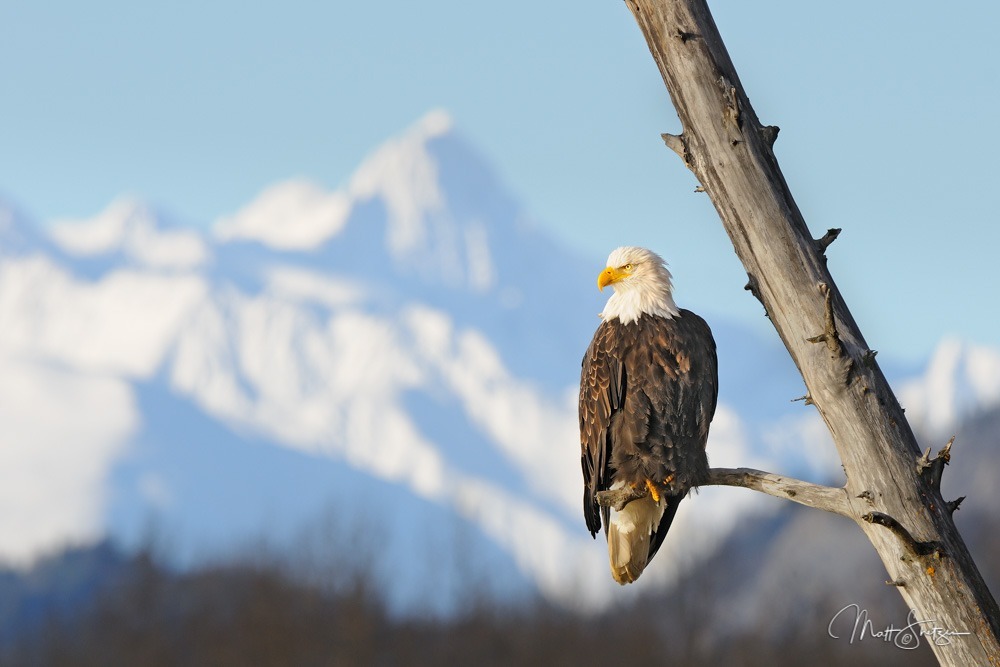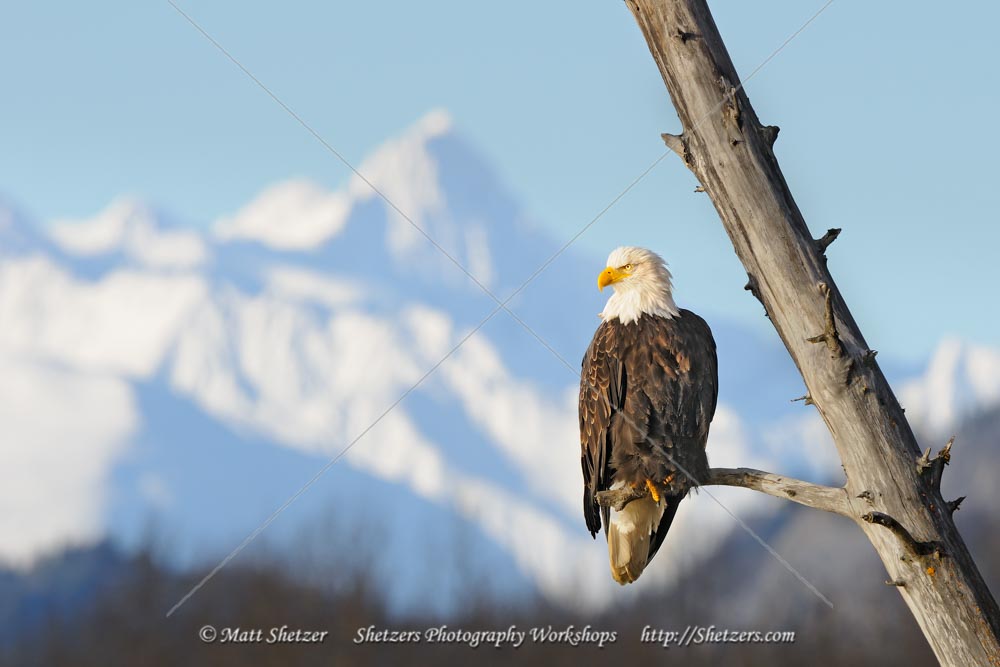Take the best images possible and make them perfect !
So what does that mean? It is best to take your time, think about your shot and the final image you would like to produce. It is real easy to go out for the day, and shoot the same camera settings for everything all day and come home with a lot of images that could be better.
Lets talk about the below image. I saw this eagle on its perch with the rugged mountains in the background. I wanted to line up the mountains in the background, make sure they were softly blurred, and capture the sharpest image of the eagle perched that I could.
To do this, I decide to change the settings on my camera for this one shot.
Shutter Speed = 1/320, Aperture = F/9.0, ISO = 200, Focal Length = 750mm

The camera is mounted on a tripod with a 500mm lens and a camera with a 1.5x crop (effective 750mm). I want to get into a sharpest/sweet spot of the lens, and have the background with a soft blur, therefore I select an aperture of F/9.0 (not wide open). I also want the least amount of noise/grain possible and select ISO 200 (native ISO for this camera).
For a correct exposure, this leaves me with a shutter speed of 1/320 of a second. This shutter speed is too slow to capture a tack sharp image by normal methods, so I put on my cable release and set mirror lockup to reduce the mirror slap of the camera ( a landscape technique that I use in wildlife photography occasionally). Now I am ready for the eagle to look into the frame, and capture the image quality I want.
Do I miss some opportunities by doing this? Yes I do! I will miss opportunities like an eagle in-flight coming at me since my shutter speed is too low, and mirror is locked up. However, I want to capture the best images I can, and configure the camera to do this. It is a trade of to capture the quality image we all want.
A bit later in the day, I will set my camera up for in-flight shots, and work on capturing those with the best settings for the scene.
Hope to see you out in the field !!
Matt

